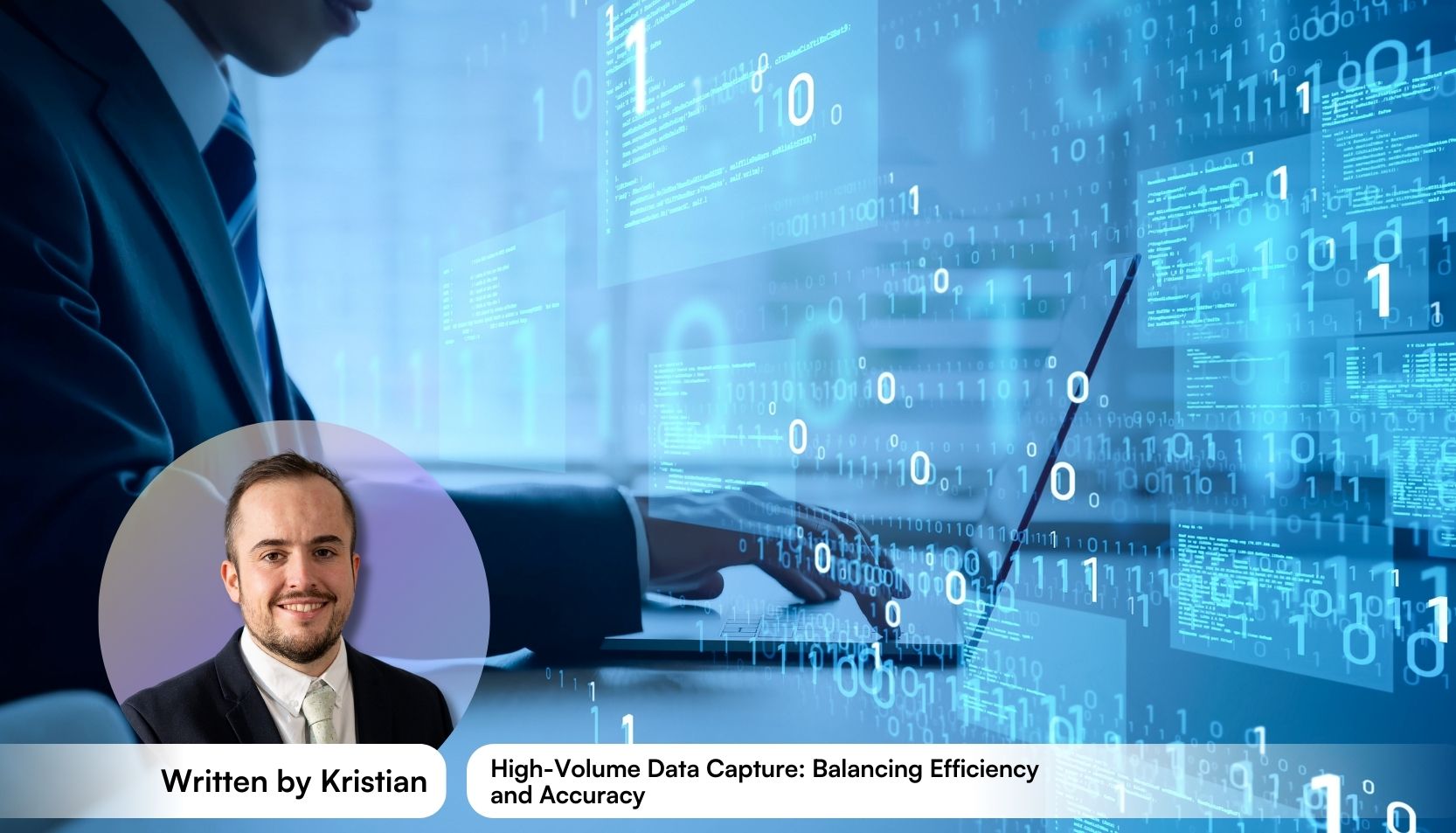

By Kristian, SYTECH Digital Forensics Services Manager
With our reliance on the digital economy, the ability to manage data effectively is critical to business success. Organisations are dealing with an ever-increasing volume of data from multiple sources, and high-volume data capture has become an essential part of operational workflows. However, as businesses scale up their data collection activities, they face a fundamental challenge: how to balance efficient data capture with maintaining high data quality and accuracy.
Achieving this balance is crucial, not only for day-to-day operations but also for improving decision-making processes, enhancing the user experience, and driving long-term business growth.
Capturing large volumes of data brings significant challenges. As the volume of data increases, so does the potential for errors, inconsistencies, and inefficiencies. Manual data entry processes, once the standard, struggle under the weight of large data sets. Even the most diligent teams can only process so much information manually, and fatigue, distraction, or inconsistencies can lead to mistakes.
Errors in data entry don’t just affect records, they have a knock-on effect across the entire business. Inaccurate data undermines decision making, reduces operational efficiency, and can severely damage customer relationships if not caught in time. For companies that rely on fast, accurate information to stay competitive, managing data properly is no longer a choice but a necessity.
Moreover, poor data quality leads to increased operational costs. Businesses may need to spend time and resources cleaning and correcting data sets, leading to inefficiencies that could have been avoided with the right systems in place from the beginning.
To keep pace with modern business demands, many organisations are turning to automated data solutions. Automated data capture systems can process vast amounts of information at speed, significantly reducing the burden on human staff and allowing teams to focus on higher-value activities.
Automated data entry processes involve the use of technologies such as:
By reducing reliance on manual data entry, businesses can substantially reduce the risk of errors, improve data accuracy, and increase processing speed. Automated systems enhance data collection while improving the quality and structure of information entering business systems.
While automation greatly improves efficiency, it is not infallible. Without proper validation measures, automated systems can still introduce inaccuracies, particularly if the data sources are poorly structured or inconsistent. This is where robust data validation becomes critical.
Data validation ensures that captured information meets expected standards before it is used operationally. Effective validation includes:
By integrating strong validation into automated workflows, organisations can maintain high data quality while still processing information efficiently. This not only reduces errors but also safeguards decision making processes by ensuring that data-driven decisions are based on accurate and reliable information.
Successfully balancing efficiency and accuracy requires careful planning and implementation of best practices:
Focus automation efforts on repetitive, high-volume tasks. Where decision making or subjective judgement is required, manual oversight should still play a role.
Validation should not be a single step—it must be layered throughout the data lifecycle. Pre-validation, real-time validation during capture, and post-capture checks all contribute to stronger data integrity.
Standardising templates, forms, and submission formats improves both the speed and accuracy of data collection. Structured fields reduce the likelihood of errors at the point of entry.
Training internal teams on correct data entry techniques, validation rules, and data handling best practices ensures that humans can complement automated systems effectively.
Data collection portals, online forms, and apps should be designed with users in mind. A good user experience reduces input mistakes, ensuring better initial data capture and reducing the need for corrections later.
Data capture processes should be monitored regularly. Implementing a continuous feedback loop ensures that errors or inefficiencies are caught and corrected early.
In high-pressure environments, the temptation is often to prioritise speed. However, cutting corners on data quality inevitably leads to bigger issues later. Inaccurate data costs organisations time, money, and reputation.
Efficient data capture enhances operational efficiency, but only when paired with mechanisms to maintain high data quality. Businesses must view speed and accuracy not as competing goals but as complementary forces: efficient systems that capture accurate data create real strategic advantages.
By improving both the speed and quality of data capture, businesses can strengthen their decision making processes, create better customer experiences, and reduce the operational risks associated with poor data management.
Accurate and timely data forms the backbone of effective decision making and operational efficiency. When decision makers have access to complete and correct information, they can act with greater confidence and agility.
Reliable data supports:
Conversely, poor data compromises every aspect of decision making, leading to costly mistakes and missed opportunities. High-volume data capture must be accompanied by mechanisms that enhance data quality to ensure that business strategies are based on solid foundations.
A large e-commerce retailer captures hundreds of thousands of data points daily; from customer information to sales transactions and delivery tracking. By implementing an automated data capture system combined with rigorous validation protocols, the company achieved:
This improvement directly contributed to stronger sales, reduced operational costs, and more efficient marketing efforts, highlighting the tangible benefits of balancing efficient data capture with accuracy.
Looking ahead, several trends will shape how organisations manage high-volume data capture:
Businesses that embrace these innovations will be better equipped to manage growing data volumes without sacrificing quality.
High-volume data capture is essential for modern businesses, but it must be done right. By combining automated data entry processes with rigorous validation and a focus on enhancing the user experience, companies can ensure that data remains both accurate and actionable.
Striking the right balance between efficiency and accuracy allows businesses to manage data effectively, improve operational performance, reduce the risk of errors, and support better decision making. In an increasingly data-driven world, organisations that invest in robust, scalable data capture systems today will be the ones best positioned to thrive tomorrow.